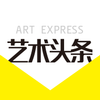分享到微信,
请点击右上角。
再选择[发送朋友]
或[分享到朋友圈]

何森用最新的这批绘画表明了他的一种清醒:从1992年开始,批评家们不断地把他纳入社会学决定论的解说,从伤痕叙述到影像文化,从社会剧变到那个典型的时尚杂志用语“青春残酷”。低调的何森什么都没有否认,但他也从来都没有忘记绘画。
绘画是什么?绘画是痕迹和幻觉的关系,绘画是痕迹和情绪的关系。当痕迹走向幻觉,绘画中出现了形象,当绘画走向情绪,形象就必须锁闭在笔法和色彩的外壳之下,成为“造型”。留下痕迹的是造型者的身体,留下情绪的是造型者的精神,造型和造境的工作,用中国的话语来说本质上是寄情,既是己之情,也是物之情,既是感情,更是性情。造型的工作便是形和神的辩证法。人物画家何森所一直处理的,始终是他的画中人的身体与精神之间的关系,这种关系在不同的时期或远或近,或激越或凄迷。那只是物之情,客体之情,何森自己,以绘事度日,以绘事和世界保持距离,以绘事免于陷入世界。这是绘事之性,何森之性。
应该怎么定义这些画?以水墨画为原型的照相写实主义油画吗?古代的痕迹成为古代的情绪的证据,而今这些痕迹成为今天的形象,由何森自己的痕迹所构造,而何森的痕迹中,留着何森自己的情绪。这是形象透支的绘画,一个绘画的怀疑主义者的痕迹。
^_^
He Sen uses his newest series of painting to attest to a sort of enlightenment: since 1992, critics have always brought his works into the discourse of sociological determinism, from scar-art narrative to the culture of images, from societal change to the phrase used in fashion magazines – “the cruelty of youth”. Being low key, He Sen has not denied anything, however he has also never forgotten about art.
What is art? Art is the relationship between traces and illusions, it is a relationship between traces and emotions. When these traces lean toward illusion, then the form appears in art, when art leans toward emotions, the form must be locked under the shield of brushstrokes and colors, which form a “composition”. The one who leaves traces is the body of the creator, the emotions left behind comprise the creator’s spirit. To create form and environment, to use a Chinese discourse to speak, is fundamentally to express feelings, that is, the sentiment of the self, as well as the sentiment of the object, emotion or characteristic. The work of composition is thus the dialectic of form and spirit. What He Sen, as a figurative artist, has always dealt with is the relationship between the body and the spirit of the painted subjects; this relationship in different periods can either be close or distant, intense or bleak. That is the sentiment of objects, the sentiment of the guest body, He Sen himself, passing his days with the business of painting, maintaining a distance between painting and the world, using painting to avoid sinking into the world. This is the nature of art, it is also He Sen’s nature.
How should one define these paintings? Are they photo-realist oil paintings with original forms of ink-wash? The ancient traces become evidence of an ancient mood, and today these traces became today’s form, composed of He Sen’s own traces, and among He Sen’s traces is his own mood. These are paintings of overdrawn form, traces of the uncertainty of painting.
作者:邱志杰

分享到微信,
请点击右上角。
再选择[发送朋友]
或[分享到朋友圈]

